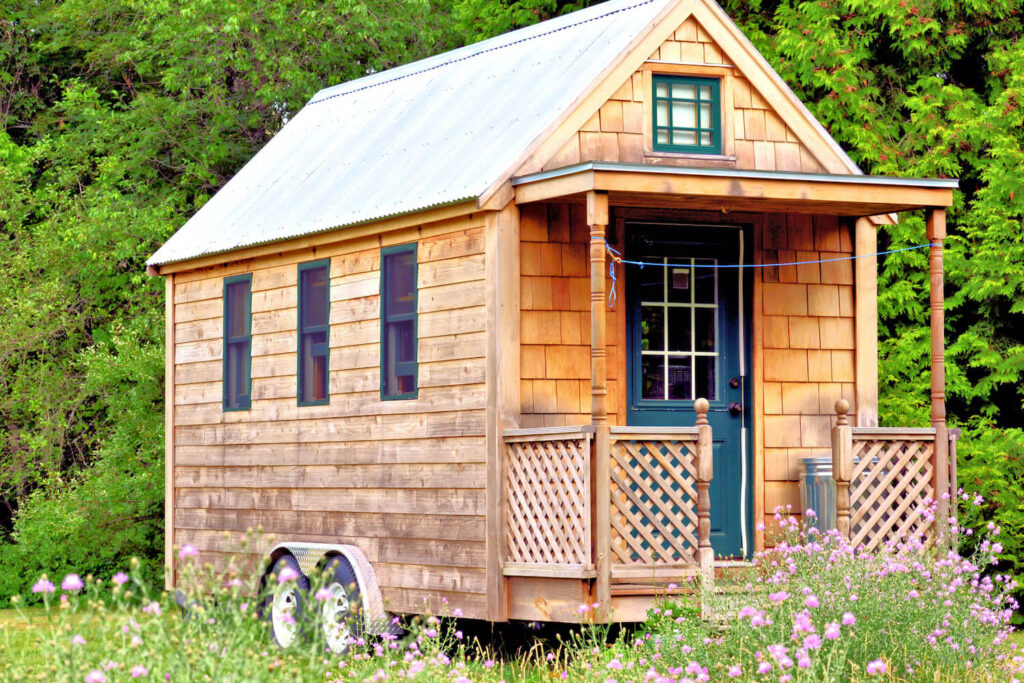Tiny homes are a growingly popular idea that provide a sustainable substitute for conventional living. The charm of tiny homes goes beyond their size – they represent a movement toward more mindful living, focusing on environmental impact, energy efficiency, and minimising waste. As more individuals choose tiny homes, it’s evident that these compact yet powerful buildings offer a special response to the rising desire for environmentally sustainable living.
Smaller Footprint, Smaller Impact
The primary reason why tiny homes are a sustainable choice is their inherent small size. These homes require fewer materials to build, less energy to heat and cool, and generate a significantly lower overall environmental footprint. Unlike large homes, which demand more building materials, energy, and water, tiny homes use a fraction of these resources. This reduction in consumption is one of the key reasons why tiny homes are heralded as an environmentally conscious choice. The smaller the house, the fewer resources are needed to build, furnish, and maintain it, which directly translates into a reduction in the carbon footprint.
Energy Efficiency And Renewable Energy Integration
Tiny home design places a high premium on energy efficiency. Their compact size makes it easier to insulate and heat, reducing the need for excessive energy use. Many tiny homes feature high-quality insulation, double-glazed windows, and smart layouts that minimise energy loss. As a result, they reduce the need for energy from traditional sources by making it easier and less expensive to keep them warm in the winter and cool in the summer.
Furthermore, a lot of tiny homeowners power their houses with alternative energy sources like solar panels. An outstanding illustration of how tiny homes can function off the grid is the incorporation of solar energy, which is among the most environmentally friendly methods of producing electricity. Due to the vast amount of space on the roofs of many tiny homes, solar panels are often a realistic solution, allowing homeowners to reduce their dependency on fossil fuels and generate their own clean energy.
Minimalism And Reduced Waste
Living in a Tiny Home Central encourages a lifestyle of minimalism. With limited space, there’s little room for excess possessions. Tiny homeowners must carefully choose what they bring into their homes, which leads to less waste being produced. This minimalist strategy significantly lowers consumption and the associated environmental cost. Fewer items mean less packaging waste and fewer products that ultimately end up in landfills.
Moreover, many tiny home residents focus on sustainable practices like composting, recycling, and using eco-friendly materials for their homes. For instance, reclaimed wood, bamboo, and recycled steel are popular choices for building materials, offering an environmentally friendly alternative to traditional building supplies. This thoughtful method not only lessens trash but also enhances the living area’s overall sustainability.
Water Conservation
Water is another crucial resource that tiny homes help conserve. With smaller living spaces, the demand for water is naturally reduced. Additionally, many tiny homes incorporate water-saving appliances, such as low-flow showers and faucets, energy-efficient dishwashers, and even composting toilets. Some homeowners go a step further by harvesting rainwater and using rainwater collection systems to capture and store water for use in irrigation or even daily activities, further minimising their environmental impact.
Sustainability Beyond The Home
Living sustainably in a tiny home often extends beyond the walls of the house itself. Many tiny home communities are built in rural or remote areas, allowing residents to live closer to nature and reduce their dependence on urban infrastructure. Some tiny homeowners even choose to grow their own food, reducing the need for transport-heavy grocery trips. This connection to nature encourages an eco-friendly mindset that influences every aspect of their lives, from transportation choices to waste management practices.
In conclusion, tiny homes are a powerful step toward eco-friendly living. By shrinking their physical footprint, homeowners naturally reduce their environmental impact. The integration of energy-efficient designs, renewable energy sources, minimalistic living, water conservation practices, and sustainable materials makes tiny homes a true model for sustainable living. As the world continues to grapple with the effects of climate change and environmental degradation, tiny homes offer a simple but effective solution to promote a greener, more sustainable future.






